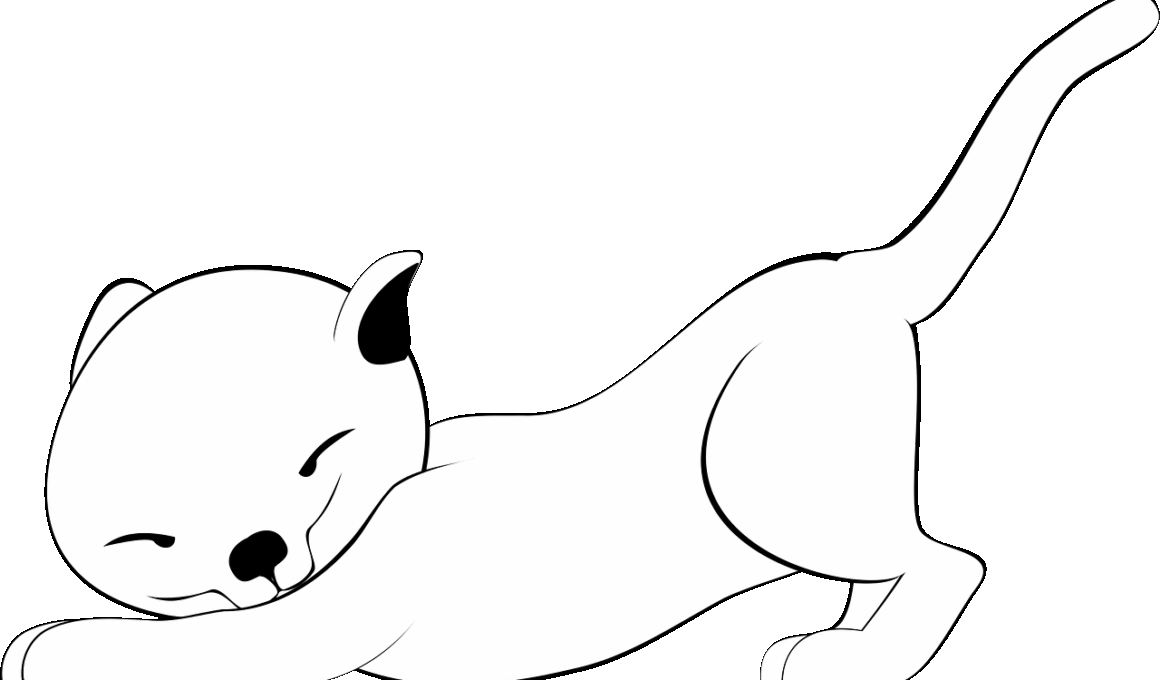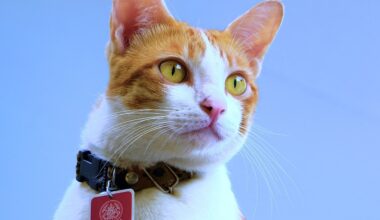Cat Purring Patterns During Playtime Explained
Understanding cat behavior can often feel like deciphering a complex code. Cat purring, which is a commonly observed behavior, varies in intensity and tone, especially during playtime. While many cat owners associate purring with contentment, it’s not always that straightforward. When engaged in play, a cat’s purring can indicate several different emotional states. For instance, a cat may purr when feeling excited or challenged during its playful antics. This playful purring can also be an indication of readiness for interaction or stimulation. Observing your cat’s body language, such as tail position and ear orientation, can provide additional insight into their emotional state. A relaxed posture, coupled with gentle purring, usually signifies enjoyment. In contrast, a tense setting where purring accompanies claws extended can signal stress or overstimulation, even while the cat engages in play. Thus, nuances in purring can reveal a wealth of information about what’s happening internally for your cat. By tuning into these variations, you can enrich your understanding of your feline friend, helping to foster a deeper relationship with them.
To further decode the nuances of cat purring during playtime, it’s essential to recognize how context plays a vital role. Various factors including environmental stimuli, the presence of other pets, and individual personality traits can influence the nature of a cat’s purring. For instance, some cats have unique purring patterns, and knowing these can allow their owners to decipher what’s happening during interactive play. It may be interesting to note that cats might produce a more rapid and higher-pitched purring sound when they are in an enthusiastic play state. Meanwhile, steady and deep purring may suggest a more relaxed demeanor, even in the midst of playful behavior. Understanding these variances in pitch and rhythm can provide insights into your cat’s feelings and comfort during play. Furthermore, social interactions, particularly with their owners or other pets, can significantly affect purring patterns, revealing information about social bonding and security. This means that each cat can display remarkably distinct purring sequences, tailored to their individual play patterns and emotional contexts, culminating in unique experiences and interactions.
Analyzing the Emotional Context of Purring
When we dive into the emotional context behind a cat’s purring, we often unveil layers of subconscious communication. The evolutionary background of our feline companions plays an important role in how they express themselves, notably through purring. To many, the idea that purring might signal distress during certain interactions might seem surprising, but it is indeed a reality. Cats can purr while feeling anxious, using it as a self-soothing mechanism. This means that while engaged in playful activities, a cat might purr both out of joy and stress simultaneously, complicating how we interpret their behavior. By recognizing this duality, pet owners can learn to differentiate between productive play and signs of discomfort. Observing their cat’s reaction to different stimuli—like sudden movements or loud noises—can guide owners in determining what purring signals may indicate. Adapting playtimes and environments can significantly help to support a cat’s emotional well-being, ensuring they enjoy their playful interactions without anxiety. Understanding the emotional context of purring paves the way for better care and interaction strategies, enhancing this feline-human bond.
Furthermore, the importance of an observant eye cannot be overstated. Due to the subtlety inherent in varying purring tones, keen observation is an invaluable skill for cat owners. Watching your cat closely during playtime reveals a plethora of behavioral cues that align with purring. For example, if your cat starts purring at a high pitch while actively chasing a toy, followed by licking their lips, that could indicate high excitement or anticipation. Alternatively, should their purring deepen, accompanied by slowing movements, it could suggest they are beginning to tire or may enjoy a more relaxed interaction. Observational learning can be quite advantageous; every cat is unique, and understanding their distinct signals can foster a stronger relationship built on trust and companionship. This synergy can lead to happier, healthier play sessions, alleviating misunderstandings. The connection built through understanding a cat’s purring variations while they play provides emotional support not only for the feline but also for the owner, making for enjoyable and stress-free interactions.
Playtime Dynamics and Purring
In addition, it’s interesting to consider the broader spectrum of cat play dynamics in relation to their purring habits. Playtime is not merely a physical exercise; it offers crucial mental stimulation. As cats engage in play, purring serves as one of the conversational tools, elucidating their feelings in real-time. The excitement generated during these engagements might trigger different vocalizations while they are purring, offering clues into their mental state. For instance, a cat that exhibits sudden purring when presented with a new toy may experience heightened interest and curiosity, signaling a playful investigation. Conversely, a cat that exhibits pauses in purring, particularly during a high-energy play session, may be exhibiting signs of overexcitement or overstimulation. These dynamics enable pet owners to adjust the intensity of play appropriately. Therefore, by recognizing the playtime dynamics and how they interweave with purring behaviors, owners can adjust their engaging methods to maintain a pet’s well-being, ensuring fulfilling engagements without excess stress or anxiety.
Moreover, consider the social aspects of play and purring in multi-pet households. Purring behaviors can significantly alter when different pets interact, affecting overall playtime dynamics. Cats who share their environment may adopt distinct vocalizations and behavior modifications influenced by their playmates. For example, in a multi-cat home, a resident cat may purr more softly amidst rambunctious play, attempting to navigate competing attention, or they might use shorter, more abrupt purring patterns as a defensive tactic. Studying these interactions provides insights into how cats express their feelings when socializing. Monitoring the atmospheric changes can reveal the difference between peaceful interactions versus competitive play. Consequently, understanding how social interactions influence purring predictions benefits all involved; it leads to healthier environments and reduces the likelihood of behavioral issues stemming from stress during play. Making adaptations based on these insights can foster harmony in shared spaces, improving relationships between all cats living together.
The Importance of Contextual Awareness
Finally, developing contextual awareness is essential for interpreting purring correctly. Purring is an instinctual behavior that has evolved in cats as a method of communication with us and other animals. This method transcends above just expressing contentment; it conveys distress, joy, and even submission, depending on varying situations. Owners should educate themselves about their cats’ preferred purring rhythm aligned with different activities. Distinct purring sounds indicate different moods, highlighting the importance of context. Furthermore, being aware of the environmental factors surrounding play can elucidate why a cat may purr in specific ways. For instance, an engaging outdoor environment may elicit a different purr in frequency and pace compared to a cozy indoor setting. Final understanding comes down to observing how cats express their feelings uniquely based on their surroundings. Knowledge in these areas empowers pet owners to cultivate deeper relationships and contribute positively towards their cats’ happiness and health. Recognizing the importance of contextual awareness transforms interactions, leading to vibrant play sessions filled with understanding.
In conclusion, decoding cat purring variations during playtime encapsulates both joy and complexity. Each cat presents an opportunity for learning; we can enrich our interactions through understanding their purring communications. By observing closely and identifying the subtle differences in purring behavior, we allow our cats to share their emotional state while playing with us. Recognizing context is crucial; knowing when they express excitement, anxiety, or contentment helps shape our interactions with them. Engaging in playful activities with our pets should be a fulfilling experience, informed by our understanding of their signals and communication styles. As we grow in awareness, we can minimize the instances of misunderstandings that compromise interaction quality. In a world where our pets rely on us for communication, the responsibility rests with us to foster this mutual understanding. Cat purring offers rich, nuanced insight into their well-being and emotional states. Henceforth, it’s important to continue exploring the complex world of cat behaviors that lie beneath the surface, enhancing our companionship and highlighting the importance of emotional intelligence in pet ownership.


